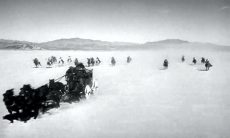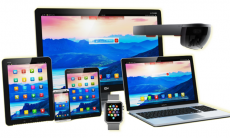Social media moves at such a fast pace that it’s sometimes difficult to dissect what worked and what didn’t. Brands are constantly competing against each other for greater exposure and more user engagement, and by monitoring the social media efforts of the best brands out there, we can definitely learn a lot about how we can improve the reach and appeal of our own campaigns. Here’s a look at the 3 biggest and most successful social media events of 2014 and what we can learn from them.
The ALS Ice Bucket Challenge
The ALS Ice Bucket Challenge wasn’t just one of the biggest social media events of 2014. It may also be the biggest viral sensation of all time. The awareness campaign helped raise over $100 million dollars for ALS, and attracted the endorsement of celebrities and famous athletes alike – helping to catapult the message of ALS to literally millions of people. Here are a few things we can learn from this extremely successful social media campaign.
Firstly, the viral nature of the bucket challenge demonstrated the power of video in attracting world-wide attention and encouraging sharing. Videos have a greater tendency to go viral when compared to articles or images because they are more of an experience for the viewer.
Secondly, as everyone was able to take part in the Ice Bucket Challenge – taking turns nominating their friends and family – the campaign leveraged on existing social networks. The power of community engagement or participation is one of the best ways to get your brand out there.
Lastly, the charity angle of the appeal made people feel as if they were taking part in a good cause. It’s doubtful whether the campaign would have been as successful if not for the ALS awareness angle.
FIFA World Cup
The 2014 FIFA World Cup in Brazil was the most tweeted sporting event ever. Period. According to Twitter, over 600,000 tweets were sent per minute during the World Cup final. The final World Cup match was also Facebook’s biggest social media event of all time.
Like the success of the ALS Ice Bucket Challenge (see above), the best performers of the World Cup utilized the power of video to spread awareness of their brand. Nike, for instance, had a particularly impressive social media campaign that centered on an extremely well produced and creative video called The Last Game. As of writing, the video has attracted over 64 million views, and helped generate significant user engagement on Nike’s social channels. For example, Nike received 6x more likes on Facebook than Adidas, and they got 2.5x more views, 7x more comments, and 10x more likes on YouTube than their footwear competitors.
The World Cup also demonstrated that persistence really does pay off in social media. For example, Adidas was able to receive 3x more views and likes on YouTube, and 2.4x more retweets than Nike through a well planned and executed campaign that operated over the entire event. As Adidas were official sponsors of the sporting event, they focused their efforts on drip feeding social posts to complement their visual exposure, and it seems like their efforts paid off.
Ellen DeGeneres’ Oscar Selfie
The element of celebrity always translates well in the social media world. Ellen DeGeneres’ star-studded selfie at the 2014 Oscars reportedly received over 3 million retweets, and, according to Twitter, was the most retweeted tweet ever.
The stunt was all part of a plan by Samsung to drum up interest in the new Samsung Galaxy Note, and according to the statistics, it seems to have worked. The selfie achieved Samsung over 900 online mentions per minute, and contributed to a significant increase in Facebook likes (over 2 million), and a flurry of articles and blog posts.
Here are the key takeaways social media marketers can learn from the Ellen Oscar selfie. To start, the timing of this selfie could not have been any better. Coinciding the stunt with one of the most watched televised events of the year meant that literally millions of users would be exposed to it. Further, the star of the shot, Ellen DeGeneres, explicitly asked her loyal fan base for help to make the selfie the most retweeted picture in history before the actual shot was taken. Asking your audience to explicitly do something usually gets them onboard.
Another important element of the selfie’s success was that it leveraged on existing social culture: i.e., the selfie. It’s very difficult to get people to do things they aren’t already doing. However, if you can piggyback on an existing social custom – such as taking a selfie – then you can make things fun for your audience whilst still getting your brand out there.
Samsung also offered to donate a dollar for every retweet to St. Judes and the Humane Society. Again, tying a campaign to a specific cause seems to generate much more user engagement.
So there we have it. The success of some of the biggest social media events of 2014 has shown us that video is very powerful in helping campaigns go viral, that leveraging on existing social networks and customs is both fun and effective, and that linking a campaign with a charity can catapult your brand to the top of the charts. We’ve also learned that a more regular and consistent social media campaign can work over the long-term, and that timing is everything.
Are there any other social media events of 2014 that you think are worth dissecting? Leave your comments below and contribute to the discussion today.




